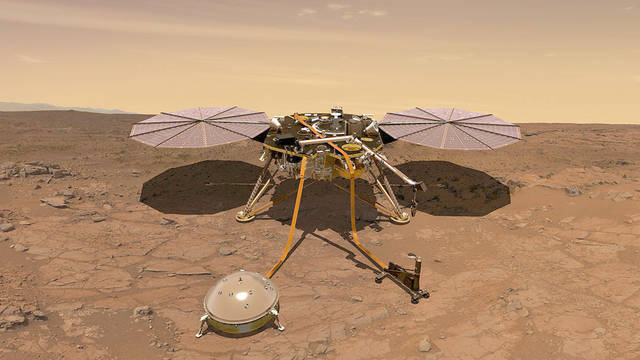With Mars making its closest approach to Earth in 15 years and a total lunar eclipse imminent, as well as the Perseid Meteor Showers in progress, it seems fitting to focus upon planetary events and celestial bodies. Also, right now I’m absorbed in reading Mary Morris’ fascinating novel, “Gateway to the Moon,” which includes the character of a youth named Miguel I liked immediately. This teen is out of step with his peers in that he prefers mankind’s ancient fascination with skywatching to texting and electronic games.
The fictional youth dreams of discovering a new moon, which his home-built telescope might handle, if not a star or planet. Someone like Miguel would like to know that Mars is taking a starring role in the night sky this week. Like this writer, he would no doubt send out a chant or a prayer that skies will allow clear viewing as the planet cosies up to our home planet so we may view it looking brighter and appearing bigger each day. It’s supposed to appear redder than ever due to clouds of Martian dust generated by a storm of several months that has impacted both our cameras and exploration on Mars.
The news originating from Cape Canaveral, Florida, included in The Garden Island’s “Morning Briefing” (A3), caught my attention last Wednesday, July 25. “The two planets will be just 35.8 million miles apart” on July 31, with good viewing through early August.” Mars and Earth were even closer back in 2003, something that same article predicts won’t repeat until 2287, when our beach chairs and mats will have long turned to unidentifiable Kauai dust in the island landfill. However, we’re assured that two years away, in 2020, there’ll be another planetary do-si-do, give or take an added three-million miles.
I’m sure Miguel would have made note of that and kept his homemade telescope shined and ready. In one particular chapter, he watches Roberto, his father, examine an old car “like a doctor,” and realizes how different they are, since he cares more about the sky and doesn’t particularly know how man-made things work, preferring to live in the world as a “magical place.” (Incidentally, a succinct explanation of how he made his telescope for very little is embedded close to the book’s beginning. )
You may want to join with me, Dear Readers, in visiting online the observatories across the U.S. that are training their state-of-the-art telescopes on and hosting Mars-viewing events. Also according to the article cited earlier, another reminder: The Griffith Observatory in Los Angeles is said to be providing a live online view of Mars early on Tuesday, July 31.
Mars since Roman times has been associated with war. It is this writer’s sincere hope that such planetary influence ascribed to the planet’s “power” does not prevail at this unsettled time.
On Friday, Aug. 3, Mars and the sun will be in exact opposition, therefore a total lunar eclipse will be viewed from parts of the world – Australia, Africa, Asia, Europe and South America. Although the moon’s eclipse will not be visible from Hawaii, disappointing for skywatchers in our state, it may be of interest to know that the Earth and the moon will line up perfectly, the shadow of the moon screening out lunar light for almost two hours.
This year of 2018 has been a good year for astronomical events. These are listed on the Bishop Museum Planetarium’s website — bit.ly/2mRkr40 — where details and explanations are provided. With such, it’s not hard to understand just why there’s a SuperMoon, a Blue Moon, and more, including what an amateur astronomer might like to know about specific words describing closeness and its opposite when skygazing.
What’s particularly helpful is that, whereas most sources list the events a good 10 hours ahead of our time, this site relates to us right here in Hawaii, whether it’s for moon phases, meteor shower peaks, or the start of the seasons and other events. Also, events specific to our particular view of the cosmos and the Hawaiian culture, such as “Lahaina Noons” and “Makahiki,” are listed. An additional resource provided is as star map for each month of the year specifically oriented to Hawaii’s latitude.
The big event of the Perseid Meteor Show is occurring now but peaks Aug. 11 and 12, with best viewing time from 12:01 a.m. until dawn. This is an ideal year for viewing this meteor shower because of the new moon Aug. 11. If the fictional Miguel existed in flesh and blood, he would be writing “METEOR SHOW” on his calendar, for sure (as we are), and perhaps dreaming of coming to Kauai to kick back in a beach chair or spread a beach mat and keep watch on an upcoming cool-sea-breeze and new-moon night.
•••
Dawn Fraser Kawahara, author and poet, made her home on Kauai in the 1980s. She and her husband, a retired biology teacher, live with books, music and birds in Wailua Homesteads. Shared passions are travel and nature. The writer’s books may be found in local outlets and on Amazon. For further information, email tropicbirdpress@gmail.



